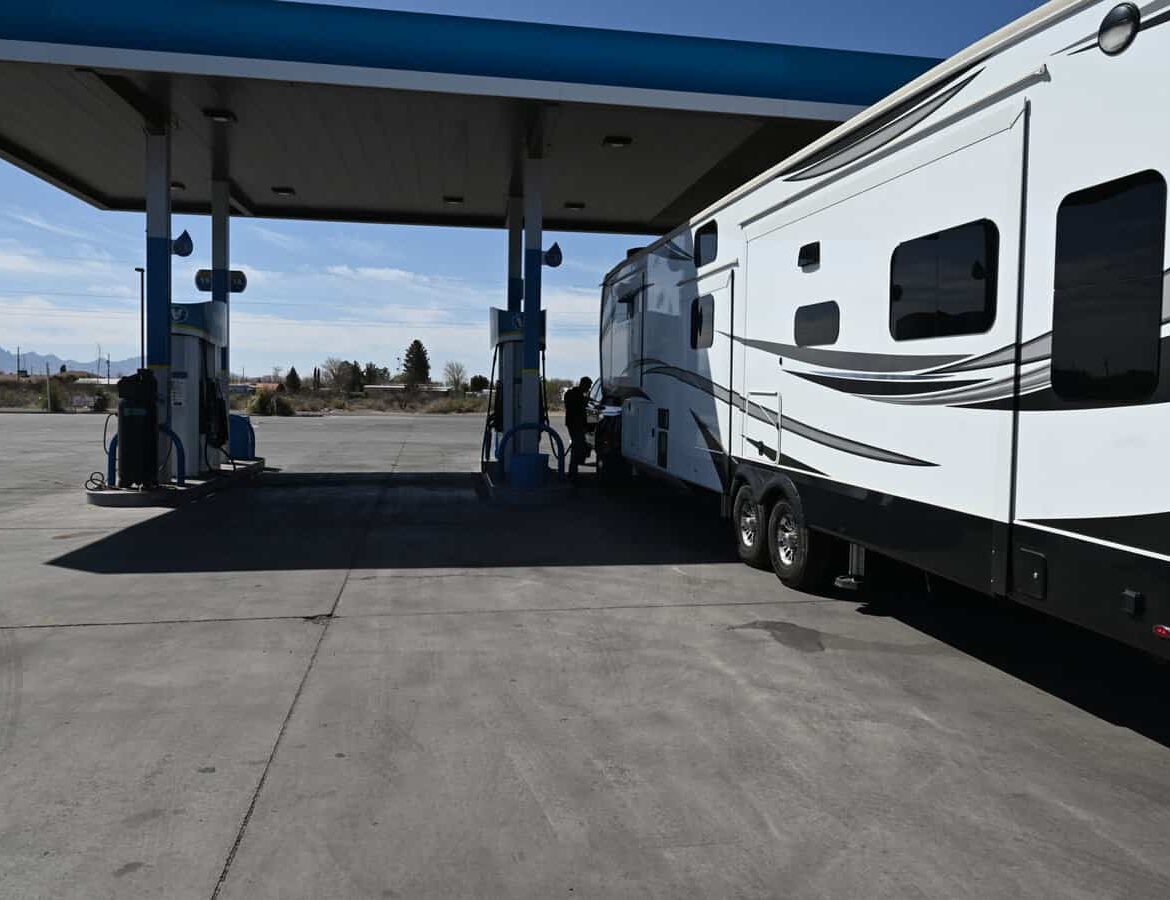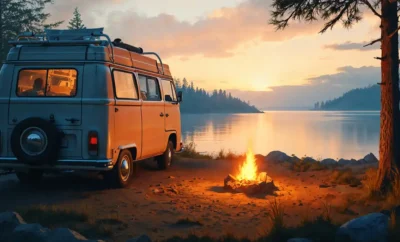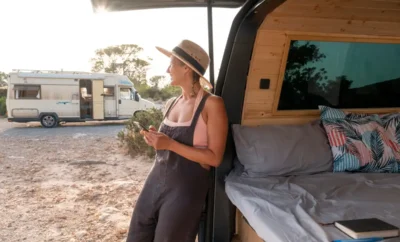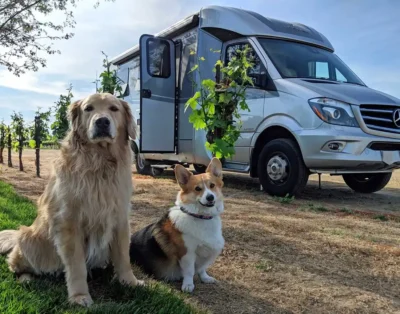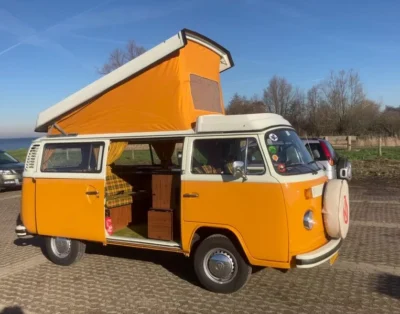Gas-Saving Tips for Your Next RV Trip
There’s nothing quite like the freedom of hitting the open road in an RV. It’s your home on wheels, your adventure headquarters, and, let’s be honest—your mobile gas guzzler. When I first started RVing, I was shocked at how quickly the fuel gauge dipped, especially on long trips. Over the years, I’ve picked up some tried-and-true gas-saving strategies that keep my wallet a little fuller and my trips a little longer. If you’re planning your next RV adventure, here are my best tips to stretch every gallon.
1. Choose the Right RV (Go Light and Small!)
Not all RVs are created equal when it comes to fuel economy. My first rig was a Class A motorhome—a beast that felt like driving a house. It was comfortable, sure, but at 6-8 mpg, I was practically pouring money into the tank. Eventually, I downsized to a Class B camper van, and my gas mileage jumped to around 18-22 mpg!
If you’re looking for the most fuel-efficient RV, consider:
- Class B camper vans (like the Winnebago Travato or Roadtrek Zion) – 18-22 mpg
- Small Class C motorhomes (like the Winnebago View) – 14-17 mpg
- Towable travel trailers (paired with a fuel-efficient truck) – Mileage varies, but choosing an aerodynamic design helps.

2. Drive Smart, Not Fast
Speed is the enemy of fuel efficiency. I learned this the hard way on a trip to Utah when I was pushing 75 mph on the highway. Not only did my gas mileage tank, but I also felt every gust of wind. Slowing down to 60 mph saved me about 20% on fuel. Cruise control is also your best friend—it helps maintain a steady speed and avoids fuel-wasting accelerations.
Another pro tip: Anticipate stops! If you see a red light ahead or traffic slowing down, take your foot off the gas early and coast instead of braking hard at the last second. This not only saves fuel but also reduces wear and tear on your brakes.
3. Plan Your Route Wisely
Winding mountain roads and constant stop-and-go traffic will eat up your fuel. On a trip through Colorado, I realized that my route had me climbing unnecessary elevation gains. Now, I use Google Maps and RV-friendly apps like RV Trip Wizard to plan routes with fewer steep climbs and less traffic. Bonus tip: Avoid city driving whenever possible—it’s a fuel-wasting nightmare.
Also, consider staying in one area longer rather than hopping from place to place every day. Not only does this save fuel, but it also allows you to immerse yourself in a location instead of always being on the move.

4. Keep Your RV Light
An overloaded RV will burn fuel faster than a campfire burns wood. I used to bring everything—extra gear, full water tanks, even a cast-iron skillet set (why?). Now, I pack only the essentials and empty my fresh and grey water tanks before hitting the road. Less weight means better mileage.
If you travel with a full fresh water tank, that could be an extra 300-500 pounds you’re lugging around. Instead, fill up closer to your destination. Same goes for extra camping gear—ask yourself, “Do I really need this?”
5. Maintain Proper Tire Pressure
Under-inflated tires can reduce your fuel efficiency by up to 10%. One morning in Arizona, I noticed my RV pulling a little sluggishly. Turns out, my tires were under by about 10 psi. I topped them off and immediately saw an improvement in my gas mileage. I now check my tire pressure before every trip.
Invest in a good tire pressure monitoring system (TPMS) if your RV doesn’t already have one. It can alert you to pressure drops before they become a bigger issue.

6. Use Gas Price Apps
Fuel prices fluctuate wildly depending on where you are. Once, I filled up in California at nearly $6 per gallon, only to find a station 20 miles down the road selling for $5.20. Apps like GasBuddy and Gas Guru help you find the cheapest fuel along your route.
Another tip: Fill up in states with lower gas taxes if you can. I’ve saved a lot by fueling up in Arizona before heading into California or choosing rural gas stations over major highway stops.
Also read out blog-post – 20 Best RVing Apps for 2025
7. Consider Boondocking Instead of RV Parks
Boondocking (camping without hookups) not only saves you money on campsites but also reduces the need for extra driving. I once spent a week on BLM land outside Sedona, using solar power and my onboard water tanks. No driving back and forth to a campground meant less gas wasted.
Plus, boondocking often means staying in more remote, scenic spots rather than packed RV parks. Just be sure to have enough water and a solid power setup to stay comfortable off-grid.
8. Use Awnings and Windows Instead of A/C
Running the air conditioner while driving will eat up your fuel. On hot days, I use my awnings at stops to keep the RV cool and open windows for cross-ventilation instead of blasting the A/C.
When parked, setting up reflective window covers can also keep your RV cooler without relying on power-hungry air conditioning.
9. Keep Up with Regular Maintenance
A well-maintained RV is a fuel-efficient RV. Here’s what I do regularly:
- Change the oil and air filters to keep the engine running smoothly.
- Ensure spark plugs and fuel injectors are clean.
- Keep the engine tuned up—small issues can add up to big fuel waste.
- Use synthetic oil to improve efficiency.
10. Take Advantage of Tailwinds
This might sound crazy, but if you have flexibility in your travel dates, check wind conditions. Driving with a strong tailwind can give you better mileage, while headwinds can drain your tank fast. I once had a brutal headwind in Wyoming that made my RV feel like it was towing an anchor.

Final Thoughts: Small Changes, Big Savings
By making these simple adjustments, I’ve saved hundreds of dollars on fuel during my RV travels. The key is being mindful—of your speed, your weight, and your route. Whether you’re a weekend warrior or a full-time RVer, these gas-saving tips will help you get more miles (and more adventures) out of every tank.
One last thing: Don’t stress too much about fuel costs. At the end of the day, RVing is about freedom, adventure, and making memories. If you have to spend a little extra on gas to chase an epic sunset or find the perfect campsite, it’s probably worth it.
Do you have any fuel-saving hacks from your own RV trips? Drop them in the comments—I’d love to hear them!

